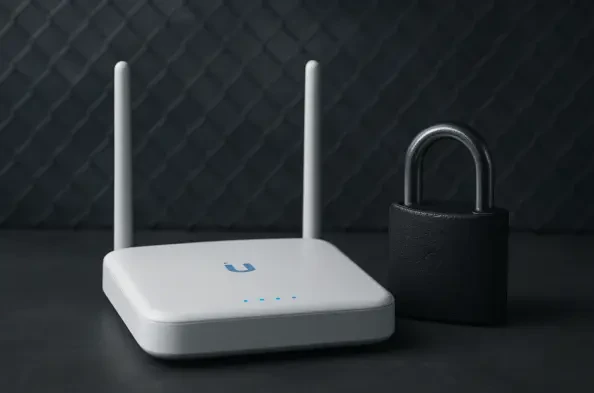Setting the Stage for Router Security Concerns
Imagine a small business owner waking up to find their entire network compromised, customer data exposed, and operations halted—all because a seemingly innocuous router was left unsecured for years, highlighting a critical vulnerability. This scenario is not far-fetched when it comes to Ubiquiti routers, devices widely used in residential and small-scale ISP networks. Despite their popularity for robust performance and affordability, a persistent shadow looms over their security, with hundreds of hacked routers still lingering on the Internet, undetected by their owners.
The issue of compromised Ubiquiti routers is not merely a technical glitch but a glaring spotlight on broader cybersecurity challenges within the Internet of Things (IoT) ecosystem. As more devices connect to the digital landscape, the stakes for network security have never been higher. This review delves into the intricate layers of Ubiquiti router security, examining how past vulnerabilities continue to haunt current systems and what this means for users and manufacturers alike.
Analyzing Ubiquiti Router Security Features and Performance
Historical Vulnerabilities and Their Lingering Impact
Ubiquiti routers have faced significant security challenges over the years, with documented compromises dating back nearly a decade. Early incidents, such as the MF worm attack around 2016, left routers displaying hacked banners like “HACKED-ROUTER-HELP-SOS-WAS-MFWORM-INFECTED,” serving as stark evidence of breaches. Another widespread issue involved tens of thousands of devices showing messages related to duplicated passwords, highlighting a systemic flaw in credential management at the time.
Even as the number of visibly compromised devices has decreased since a peak a few years ago, data from Internet scanning platforms reveals that hundreds of Ubiquiti routers still bear these defaced banners. This persistence indicates a troubling lag in remediation efforts, where devices remain vulnerable long after initial attacks. Such longevity of breaches raises questions about the effectiveness of past security updates and the mechanisms in place to alert users to potential threats.
Core Weaknesses in Security Design
At the heart of many Ubiquiti router compromises lies a fundamental issue: weak credentials. Default passwords like “ubnt/ubnt” or easily guessable combinations have historically provided attackers with a straightforward entry point. Older models, in particular, often lacked the robust password policies that are standard in modern devices, leaving them exposed to brute-force attacks and other exploits.
Beyond technical shortcomings, there exists a significant gap in user awareness. Many owners of these routers, often in consumer or small business settings, remain oblivious to breaches for extended periods. This lack of visibility underscores a critical challenge in IoT security—ensuring that end users are equipped to monitor and respond to threats in devices that are constantly connected to the Internet.
Unclear Intentions Behind Attacks
Adding another layer of complexity to the security landscape is the ambiguity surrounding the motives of attackers. Security researchers have noted that many compromised Ubiquiti routers show no clear evidence of follow-on malicious activity, suggesting that some hacks might be experimental or casual rather than part of a coordinated campaign. This uncertainty makes it difficult to gauge the true risk posed by these breaches.
Without a clear understanding of attacker intent, assessing the potential damage becomes a speculative exercise. Are these routers being used as backdoors for future exploits, or are they simply trophies of opportunistic hackers? This question remains unanswered, complicating efforts to prioritize and address the most pressing threats in network security.
Real-World Risks and Broader Implications
The implications of hacked Ubiquiti routers extend far beyond individual devices, posing risks to entire networks, especially in residential and small business environments. A compromised router can serve as a gateway for attackers to intercept sensitive data, disrupt services, or even launch broader attacks on connected systems, undermining trust in digital infrastructure.
These incidents also reflect a systemic issue within the IoT domain, where device maintenance is often neglected after initial setup. The persistence of vulnerabilities in Ubiquiti routers serves as a cautionary tale about the dangers of outdated security practices and the need for continuous vigilance. For end users, the fallout can range from financial losses to privacy breaches, emphasizing the real-world stakes involved.
Challenges in Securing and Remediating Devices
Addressing the security of Ubiquiti routers is fraught with obstacles, both technical and behavioral. Detecting compromised devices remains a significant hurdle, particularly in consumer settings where users may lack the tools or expertise to identify breaches. Even when issues are detected, remediation often falls short due to outdated firmware or inaccessible support channels.
Moreover, the responsibility for security is fragmented across manufacturers, ISPs, and end users, creating a disjointed approach to threat management. While some progress has been made in reducing the number of visibly hacked routers, the enduring presence of vulnerable devices signals a need for more cohesive strategies. Overcoming these challenges requires not just technical solutions but also a cultural shift toward prioritizing device security at every level.
Verdict on Ubiquiti Router Security
Reflecting on the detailed examination, it becomes evident that Ubiquiti routers, while valued for their performance, have grappled with significant security shortcomings that persist over many years. The historical vulnerabilities, driven by weak credentials and compounded by a lack of user awareness, paint a sobering picture of the risks embedded in widely used network hardware. Despite reductions in the number of compromised devices, the lingering presence of hacked routers underscores a critical gap in long-term protection.
Looking ahead, actionable steps emerge as essential for mitigating these risks. Manufacturers need to enforce stricter default security settings and provide clearer update mechanisms, while ISPs can play a pivotal role in educating customers about monitoring connected devices. For end users, adopting robust password practices and staying informed about potential threats stand out as immediate priorities. Ultimately, strengthening Ubiquiti router security demands a collaborative effort to rebuild trust in IoT ecosystems and prevent future breaches from casting a shadow over digital connectivity.






